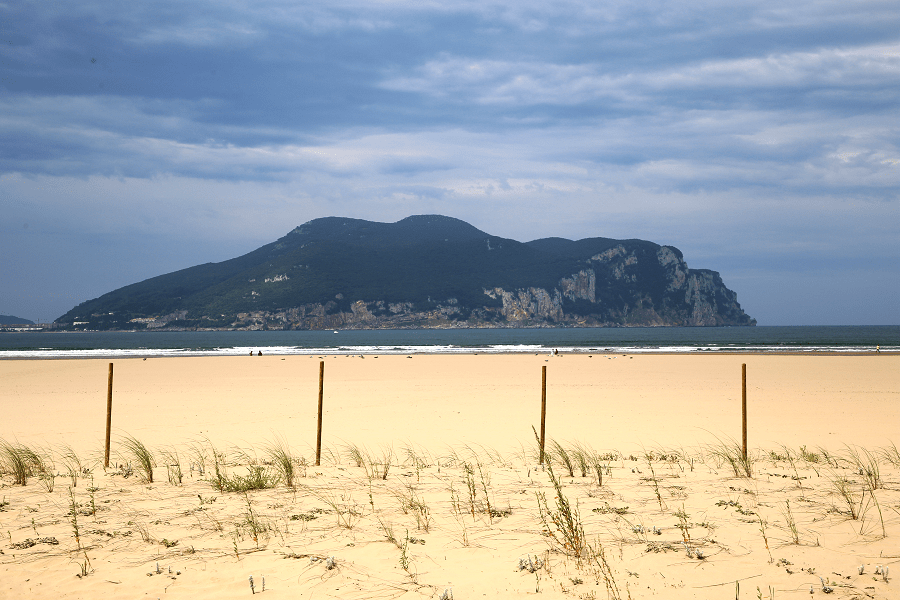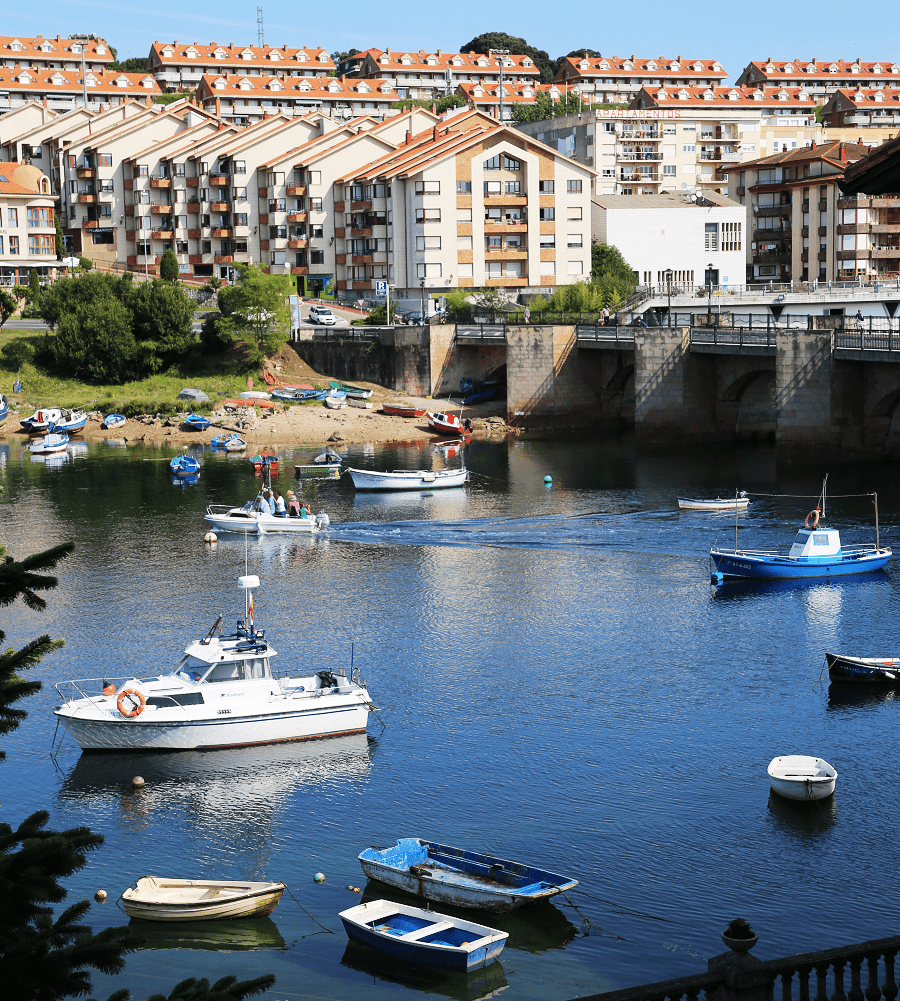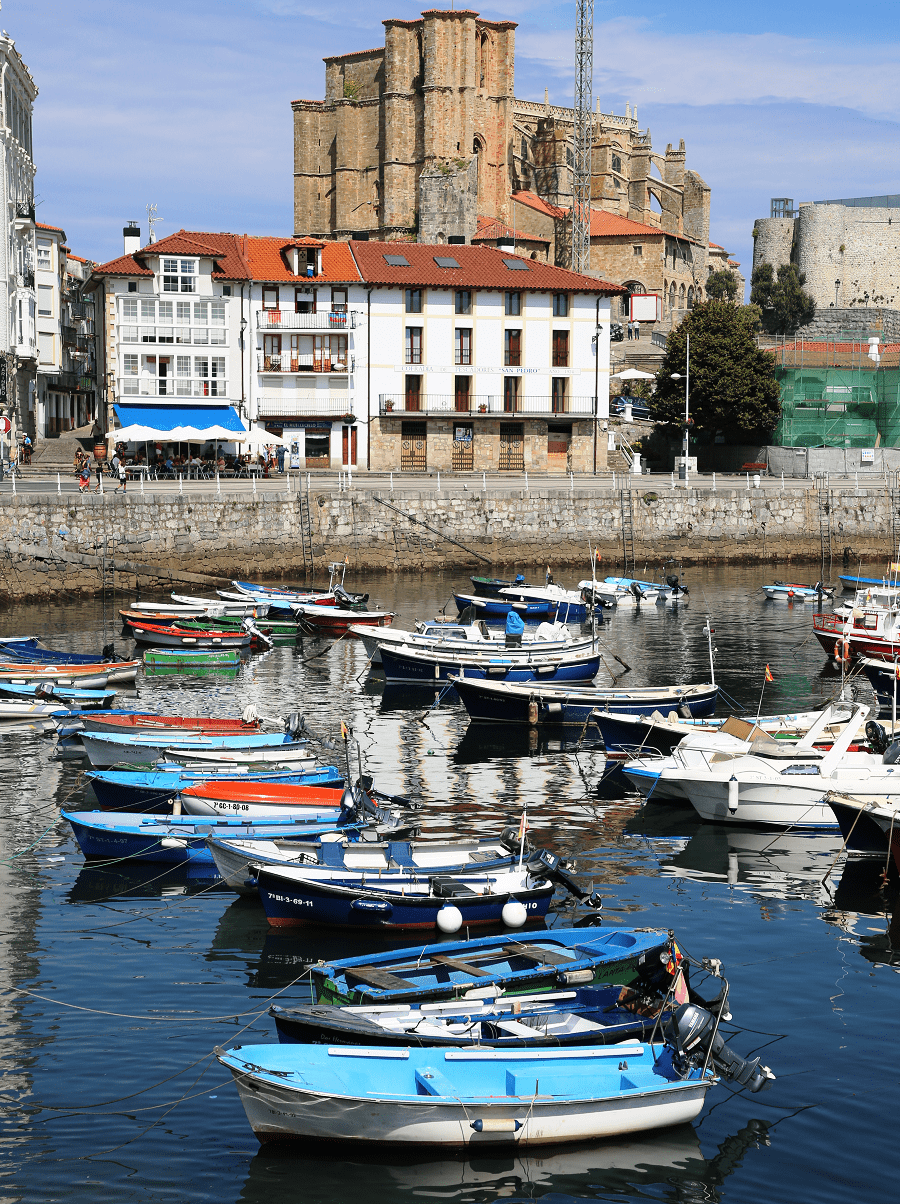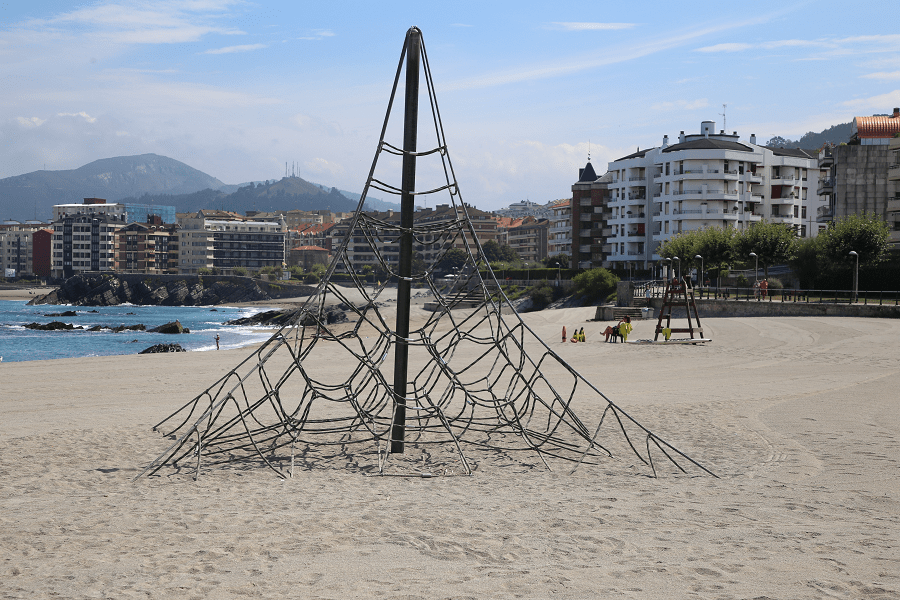Costa Cantabria is the tourist name assigned to the coast of Cantabria (Spain), located in the Cantabrian Sea, Atlantic Ocean.
The Cantabrian coast extends along the entire coastline of the homonymous region and is divided by the Costa Vasca in Basque country to the east and the Costa Verde (Green Coast) in Asturias to the west.
The most differentiating thing about the Cantabrian coast with respect to the rest of Spain, with the exception of Galicia, is the presence of estuaries, which give it a more convoluted perimeter; Thus, Cantabria has 1 km of coastline for every 509 km² of surface, while the total for Spain is 1 km for every 126 km².
These estuaries take their own name different from that of their rivers; for example, the Mogro estuary is the mouth of the Pas, and the Cubas estuary that of the Miera.
Cantabrian waters vary between 11ºC in February and 20ºC in August, a small change due to the Gulf Stream, which in winter keeps the waters at a temperature higher than that which would correspond to their latitude.
The prevailing winds in winter are from the Northwest. In general they are not dangerous, except for the southerly wind in the Bay of Santander, which raises large waves. Between June and September galernas occur on occasions, a sudden meteorological phenomenon that is very dangerous for vessels on the high seas.
Along the entire coast, Santander Bay stands out, the largest and safest port between Bordeaux and La Coruña, although its shape has shrunk over the centuries while the nearby Bilbao estuary has widened. Santander Bay is sheltered from all winds except the south wind. A chronicler said that it was “the widest, safest and strongest port (…) of the entire Cantabrian coast and, therefore, one of the five famous ones that Spain has”.
Since ancient times there has been evidence of the human presence on the Cantabrian coast. There is evidence already in the Mousterian period, 40,000 years ago, and it is known that in Roman times there were at least the ports of Flaviobriga (Castro Urdiales), Portus Victoriae Iuliobrigensium (Santander), Portus Blendium (Suances) and Portus Vereasueca (San Vicente de la Barquera).
During the Late Middle Ages, the activity of the Brotherhood of the Four Villas stands out, while in the 16th century almost 90% of the ships destined for the Indies and the Pacific were built between Cantabria and the Basque Country. Later, and although shipbuilding fell into disuse in the north of Spain, it continued to be an important task for the bays of Santander and Santoña.
Today Cantabria offers over 220 kilometres of coastline, with more than 90 beaches in fantastic natural settings.
Best resorts (from east to west)
Castro-Urdiales – a Historic-Artistic Site
Laredo – a Historic-Artistic Site
Santander – the capital of Cantabria
Comillas – the Spanish royal resort since 19th century
San Vicente de la Barquera and its attractions
How to get to?
By air:
The region is served by the Seve Ballesteros–Santander Airport (SDR), located four kilometres south of Santander. It is an international airport and the only airport in Cantabria.
By sea:
There are ferry services to Santander from Portsmouth and Plymouth in the United Kingdom and Cork in Ireland, all operated by Brittany Ferries.
By train
Santander railway station serves three million annual passengers. Direct communication with Madrid, Barcelona and many other big cities of Spain.
See here best sea and ocean resorts of France and Spain (223 objects)






















